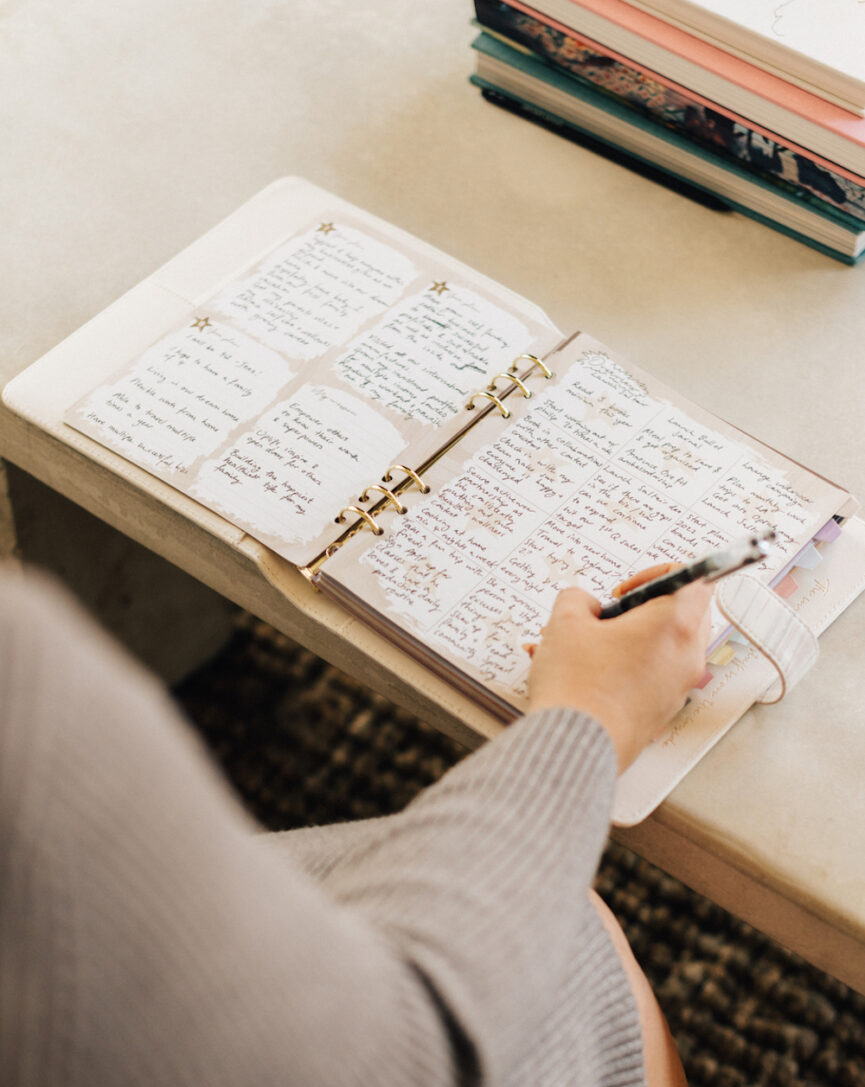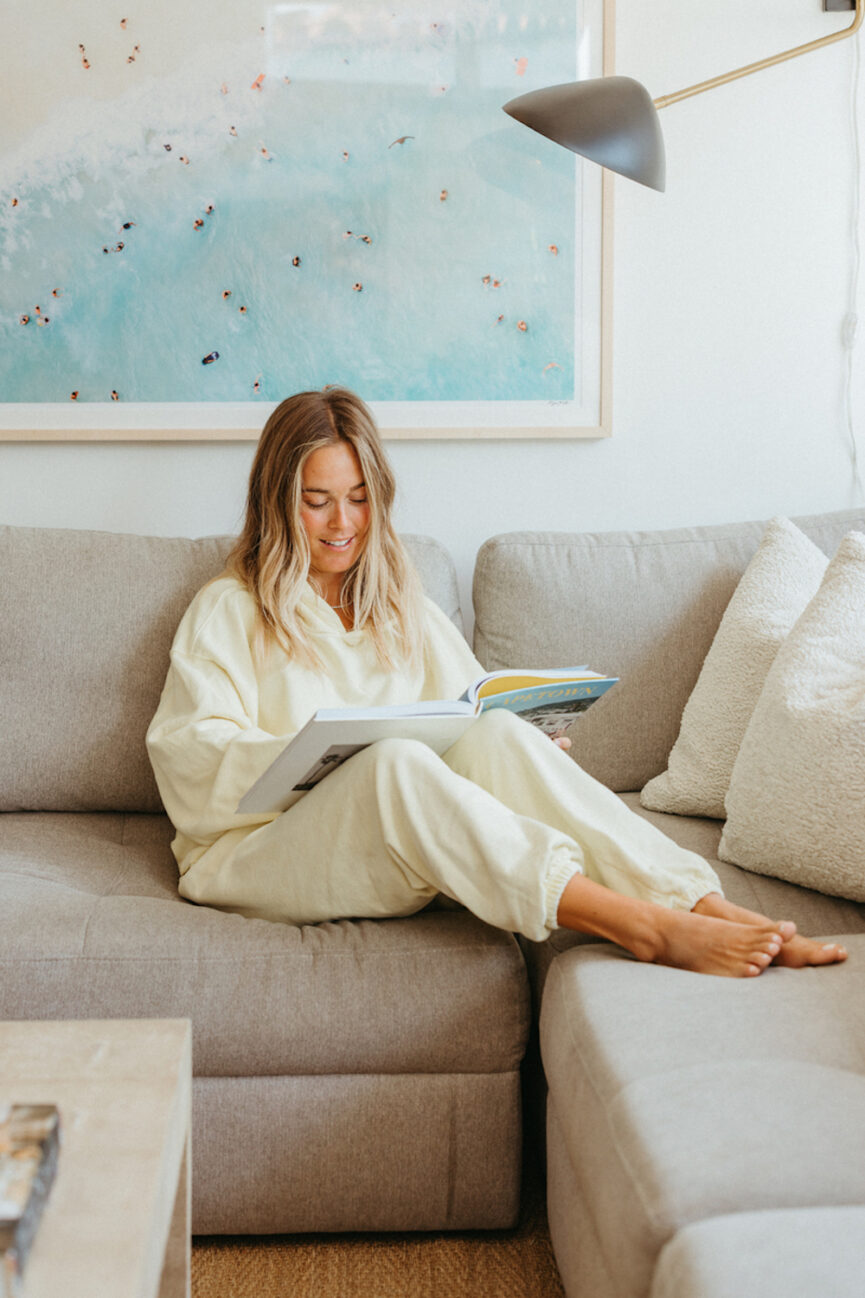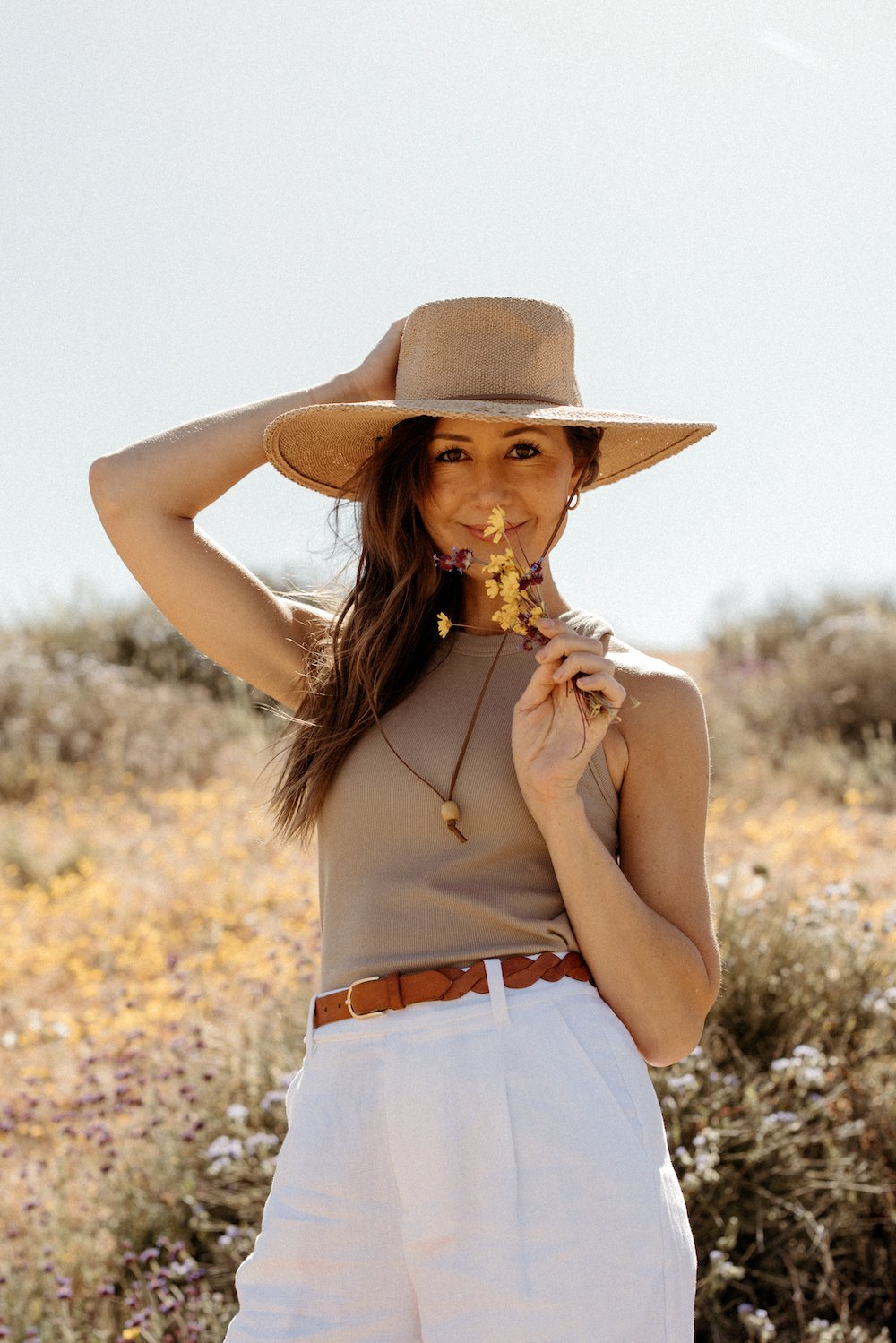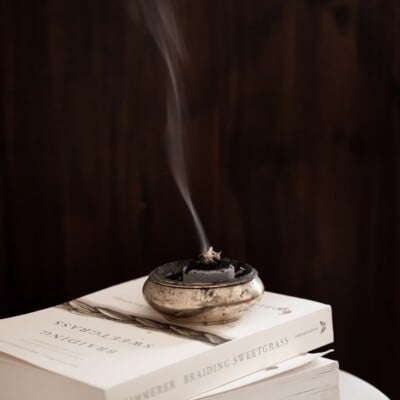I’ve long believed: a happy, healthy life is built on rituals. From your morning routine to your evening wind-down, our days flow with greater ease when we have supportive habits in place. Decision fatigue is an inevitable truth of our lives (the internet presents us with no shortage of rabbit holes). But rituals allow us to weave more intention into our choices. By committing to what helps us feel our best, we benefit from a level of self-trust that becomes a fixture of our days. And as a writer, that truth shows itself most in my daily writing rituals.
I’m both blessed and cursed with a creative career. Writing, of course, is a skill you develop through education, experience, and exposure to beautiful words and effective style. But it also requires inspiration—a central point from which we can build a story, argument, or even a single thought. And honestly? Some days, I don’t have it. Writing rituals, however, help me conquer the blank page with confidence.
Featured image from our interview with Roxana Saidi by Suruchi Avasthi.


What are writing rituals?
Writing rituals are the consistent set of steps we take to prepare ourselves before putting pen to paper. While they look different for everyone, writing rituals arrive at the same goal: to feel energized and inspired to structure our thoughts effectively and in a way that aligns with our ultimate desire to communicate them to others. Sometimes they’re simple; sometimes they’re deeply idiosyncratic. What matters most is that they put us in a headspace with greater freedom to create.
Writing rituals are proof that there’s power in consistency. When we put ourselves in the same place, at the same time, and having done the same actions that we know and trust make us feel ready to pour outward, the creative process is more successful. With fewer variables to control, we have the opportunity to explore without any mental barriers weighing us down. Does that sound too abstract? As someone who’s committed herself to 1500+ words daily, trust me: it works.
As the mid-century novelist and short story writer, Flannery O’Connor shared, “I’m a full-time believer in writing habits… You may be able to do without them if you have genius but most of us only have talent and this is simply something that has to be assisted all the time by physical and mental habits or it dries up and blows away.”
It’s true (and I could write an entirely separate article about this): writing is not a gift. Writing is a “talent,” e.g., something you build by engaging with and encountering daily. Have I exhausted this point enough? Great—let’s dive into the exact writing rituals to help you build a more rewarding practice.


Writing Rituals to Cultivate for Everyday Inspiration
1. Generate Inspiration
Many call this “pre-writing,”—I consider it the intentional act of putting yourself in the path of inspiration. While creativity is often thought of as an inherent trait, I believe it’s an orientation and approach to life. It’s a way of looking at the world with hope and optimism, understanding that every day is an opportunity to amplify the inputs you take in. Because the best writing is exactly that: a connection to and deepening of how you observe and experience the world.
Elizabeth Gilbert shares a sentiment in her book, Big Magic that summarizes this succinctly: “A creative life is an amplified life. It’s a bigger life, a happier life, an expanded life, and a hell of a lot more interesting life. Living in this manner—continually and stubbornly bringing forth the jewels that are hidden within you—is a fine art, in and of itself.”
Again: this could have nothing to do with your writing itself. (And likely, it doesn’t.) Ask yourself how you’re already leading a creative life—and how you can nurture more of this vibrancy in your every day.
2. Habit Stack Your Writing
It’s no secret—we love habit stacking. By pairing a desired habit with one you already practice, the behavioral technique makes it easier for you to incorporate and build new rituals into your life. And spoiler: writing can be one of them.
Take stock of the habits you’ve already automatically incorporated into your day-to-day. Likely, these will be so small and simple that they often go overlooked. Making your bed, prepping breakfast, getting dressed for the day, taking an AM walk, having your midday lunch break, getting home from work, watching an evening show with your partner, etc. The list is endlessly permeable, of course, giving you no shortage of options to structure your own writing rituals around.
But what does this look like in practice? Examples of habit stacking your writing rituals could include:
- After I make my coffee, I will take it to my desk where I’ll light a candle and write for 20 minutes.
- After I get into bed at the end of the day, I will open my journal and write one page.
Habit stacking yields a similar result to structuring a creative life. By designing routines and rituals around your writing that are dependent on habits you already do, you make them more desirable and automatic. And when what was once difficult becomes ingrained, you not only do it more, but you can apply this new energy and inspiration to the writing itself.


3. Write in an Inspiring Environment
First, to reiterate: strong writing rituals rely on consistency. When we establish a foundation for our creative actions and habits, we subconsciously orient ourselves to practicing them with regularity. This applies to the physical space we write in as well. I’ve experienced periods in my life where my writing has been done in hurried, stolen moments from random spots throughout my day. (Long stretches of travel will do that to you.) Having seen what that did to my style and output, I now prioritize and protect my treasured writing spot—a small desk in the corner of my bedroom.
If you’re aesthetically driven like me, then writing in a beautiful environment is important. And no, it doesn’t have to be lavish or over-the-top. Instead, first focus on what an inspiring environment looks and feels like for you. In your journal, reflect on the places you’ve felt most energized and creative. Maybe it’s a favorite coffee shop, library, or workspace. How can you apply the details and characteristics of that space to your desk, office, or any cozy corner you choose to write from?
And while other writers take a minimalist approach to their space, I’ve followed Camille’s guidance in creating a vision board, surrounding myself with images and objects that hold sentimental value. This helps fuel your writing, grounding you in the gifts and perspective you bring to the page.
4. Set Goals
I’ll share a secret: there was a time in my life where I struggled to create goals. I had just finished college, and having left the highly-organized, structured world of academia, I was now free to pursue my path as I pleased. But I wasn’t sure where I wanted to live, what I wanted to do, or really who I wanted to be. (Who can relate?) And if you write outside of your 9-to-5, it may be that your writing habits take on a similarly abstract shape.
First, I can sense the expected resistance. Writing is creative, why should I attach external milestones or rewards to my practice? Sure, a certain page count might not motivate you, but I’ve found that when I’m actively aware that I’m building and working toward something, it helps me sit down to actually do it.
It’s tempting to start by setting a lofty goal. But… it’s also easy to fall short of that goal and give up. Begin with small, bite-sized intentions. Maybe that’s 100 words each day, five pages each week, or a 30-minute free-write every morning. You’ll quickly find that showing up daily will transform these small goals into finished drafts you can look back on with pride, excitement, and appreciation for the journey.


The Takeaway
Our days move more mindfully with rituals we can rely on. Ultimately, it’s our habits that build a vibrant life. And whether writing is your job, side “hustle,” or passion (or some combination of the three), your work and words will benefit with powerful rituals in place. Take this as my invitation to romanticize the process and savor the journey. While a buttoned-up piece is an accomplishment, it’s the path that’s yours to celebrate every day.





